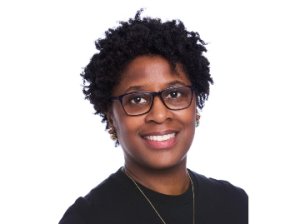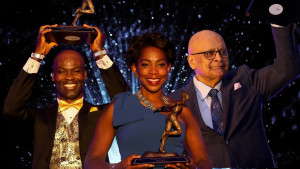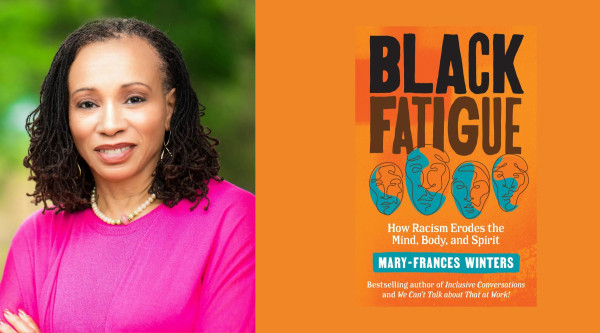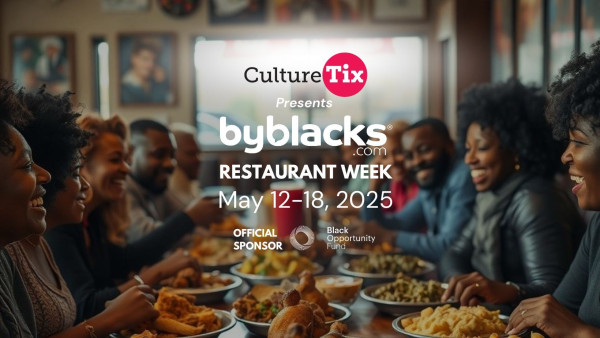Or you’re asked by one of the attendees at a business meeting you’re hosting whether you have the right room. The assumption is that as a Black person, you must have stumbled into the wrong room since you couldn’t possibly be in this meeting, much less hosting it.
Like many Black and Indigenous People of Colour (BIPOC) employees navigating “microaggressions” in the workplace, these are a dime a dozen, and they’re exhausting.
Coined in 1970 by Harvard University Psychiatrist Chester M. Pierce, the term “microaggression” encompasses the insults, dismissals, and devaluations faced daily by racialized people. It's a dynamic that speaks volumes about the evolution of racism, from blatant acts of bigotry to the subtle and more insidious nature of microaggressions.
In the workplace, microaggressions, which psychologists liken to death by a thousand cuts, can lead to being overlooked, under-respected, and undervalued. A recent study by KPMG found that 81% of Black professionals in Canada faced workplace racism or microaggressions in the past year. Black women experienced a 10% increase in workplace racism or discrimination compared to last year’s results, which suggests companies aren’t digging deep enough to get to the heart of the issues.
With acts of microaggressions being so commonplace in Canadian workplaces—and around the world—does it make sense to address them head-on or let them slide? And how do you assess the ones to escalate or not die on the hill for?
To shed light on these issues, I caught up with KPMG’s Chief Inclusion, Diversity and Equity Officer, Rob Davis; Journalist, Lawyer, and Diversity and Inclusion Advocate, Dr. Hadiya Rodrique; and ByBlacks’ Editor-in-Chief and Founder of The Idea Practice, Camille Dundas.
Interviews were conducted separately and have been slightly edited for length and clarity.
BB: For anyone new to this discussion, how do you define microaggressions in the workplace? What are some of the key characteristics that distinguish them from other forms of discrimination or bias?
Rob: Usually, it’s a situation where someone says or does something that, from their perspective, is meant to be a compliment but touches on sensitive topics like race, gender, sexual orientation, or parental status. Although the intention may be positive, the person on the receiving end experiences the impact negatively.
Dr. Rodrique: It can be a statement, action, or insult that one would regard as an everyday slight or indignity based on one’s membership in a group that’s discriminated against. It can also be shrouded in a compliment.
So, an Asian Canadian student, for example, being complimented by a professor for speaking perfect English when English was their first language, and they were born in Canada, just like half the other white students in their class.
What’s so disconcerting about microaggressions is that they often happen very casually, very frequently, and often without harm intended. But when 10 of these happen to you in a day, that’s macro. So, microaggressions aren’t micro. They’re aggressions because the term microaggression implies it doesn’t hurt anyone.
Camille: While microaggressions can be defined as subtle put-downs that, on the face of it, can seem like compliments, what they amount to are put-downs of historically marginalized people. But they're not overt, usually, and that's what makes them different because they're often hidden in the compliment.
But it's important to know that many different groups can face them. It's not just racialized groups that face microaggressions. Of course, women of all races face microaggressions, people from queer communities, disabled communities, people of marginalized spaces, and lots of different groups of neuro diversities, so there are lots of different ways that microaggressions can be experienced.
However, the best practices are moving away from calling them microaggressions and calling them acts of exclusion instead because it speaks more directly to the impact.
BB: What are some common microaggressions that employees might encounter in a workplace setting?
Camille: If you’re Black and a woman, you may get categorized during a feedback session with your manager, for example, as being aggressive. Even if you're just speaking up for yourself the same way everybody else does, you’ll be told that you’re being aggressive and scaring people. We very often hear from studies and surveys involving Black women in the workplace who’ve been told they’re either “too much” or not doing enough to fit in.
Rob: From an LGBTQ+ perspective, telling a gay person who has come out in the workplace that they don’t seem gay is often posed as an innocent observation or that nothing was really meant by it. But what does that mean? That if you’re gay, you’re supposed to be effeminate? Flamboyant? How is that even positive?
I've also certainly heard from Black women professionals here in the firm where someone would comment on their hair or even touch their hair out of curiosity, which can be completely inappropriate and uncomfortable. Over time, if you're Black, if you're gay, if you're a woman, if you're a Black woman, these things can wear you down.
Dr. Roderique: Nine times out of 10, it’s related to your competence or your ability. Remarks that point out that you don't belong, that people like you aren't supposed to be here. That if you are here, you're the exception to the rule. Like, “Oh, you're so well-spoken,” or, “Oh, you went to U of T? Oh, I wouldn't have thought that.” Well, why not? I even had someone once tell me, “Oh, we didn’t invite you to the ski trip because we didn't think Black people skied.”
BB: When is it appropriate to confront a microaggression directly, and when might it be more beneficial to ignore it? What factors should individuals consider when determining their response?
Rob: Well, this is based on my own mantra, and there's no right or wrong answer here. However, based on my own experience, I found that it's much more difficult to call it out and confront it the more junior you are, especially in a professional service environment.
This is why, when I talk to all my partners here at our firm, I let them know that it's up to the leaders. It’s up to senior people in organizations to call things out respectfully. The more that leaders don't call it out, the more they hear and see stuff and don't do anything, the more it's going to be embedded in the culture and perpetuated.
Dr. Roderique: This will vary depending on whether you are the target of the microaggression or the observer. It will also vary depending on your power in the organization. So, it's my opinion that those with power have an obligation to call it out because that’s the voice that's going to get listened to. You have to use that power for good and say to your white colleagues, “We don’t say things like that around here.”
Camille: Each of us individually has a different tolerance level, and that level might shift on different days based on how many microaggressions you've experienced that week because Black people are experiencing these things on a regular basis.
And so, very often, we'll choose to ignore it based on a couple of factors. What's our relationship like with this person? Are they someone that we only see once or have to work with? If it's someone you're never going to see again, you may choose to ignore it because that's not going to have any future bearing on you. But if it's somebody who’s a colleague or team player, you might think to yourself, okay, let me address this now, so I make sure it doesn't happen again.
BB: Are there any specific strategies or techniques that you can recommend for addressing microaggressions effectively when confronting them in the workplace?
Dr. Rodrique: The strategy I often use is humour, or I play dumb. I never accuse anyone of anything. I ask questions. So, if I were to respond to that carpet and drapes question now, I would probably bat my eyes a little bit and be like, “Oh, I've never heard that before. What's the carpet? What are the drapes?”
Rob: If you can, use it as a teaching moment. I think a lot of this comes down to education. I'm not sure why you have to explain to someone why it's not appropriate to touch a Black woman’s hair or to say to a gay man, “Oh, you know, you don't seem gay.” That would seem obvious. But where it isn’t, then explaining how their statement makes you feel should be the first step.
Camille: In a workplace setting, assuming good intent and leading with education is often helpful. So, you might want to say: “Hey, I know you probably didn't mean it this way, but here's how it impacted me.”
If that doesn’t align with your personality, then send a message or write an email. I'm generally not a supporter of passive aggressiveness, but I’m not above sending a link to an article that addresses why what they said was inappropriate. And you just send that via Slack or Teams or whatever, like, “Hey, I thought you would enjoy this article.”
BB: Are there certain situations or contexts where it’s advisable to escalate microaggressions to a higher authority or HR department? How does one determine when it’s necessary to involve others?
Dr. Roderique: To the best of your ability, try to handle it independently. If it's peer-to-peer and your manager isn't doing anything about it, then maybe HR. However, I wouldn't go to HR if nobody's correcting them. I’m either going to find a new manager, or I’m going to leave because they don't deserve my talent if they can't have managers who are going to reward and support that talent.
Rob: That's a tough one because it's also such an individual thing. What may be tolerable to one person may be intolerable to somebody else. So, it boils down to whether there's a safety issue. Can you elevate it without fear of reprisal? If it’s so bad that it's going to make you leave, then at that point, you should elevate it. But I recommend trying to elevate it within your teams, your mentor, or your sponsor circle.
Camille: So, there are interpersonal microaggressions that you can address yourself. But when you realize that your work opportunities are being impacted, you want to escalate that either to your manager, HR, or the manager of your manager.
It’s sad that we have to do this much vigilance and surveillance of people in the workplace. To always be on guard for how we are being impacted by other people's biases. But there’s also a thin line between being vigilant and being paranoid about how your career is impacted by how people treat you.
BB: So, how can organizations and leaders create a safe and inclusive environment where employees feel empowered to speak up about microaggressions and know that their concerns will be taken seriously?
Dr. Rodrique: The way you show me that you care and that you're doing something about it is by doing something about it. If someone commits a microaggression in front of a boss, I shouldn't have to do anything. The boss should automatically speak to that person and then come to me and tell me that they addressed the situation and this is what's going to happen going forward. I shouldn't even have to complain if it was witnessed.
Rob: I think most large organizations have a pretty robust idea that Diversity, Equity, and Inclusion (DEI) has to be a big part of the strategy. Making sure that people feel included and that there’s an avenue for people to feel psychologically safe in the organization for these discussions to happen. And to me, that's the tone at the top. It's educating leadership about creating a diverse, inclusive, and equitable culture.
Camille: Implementing educational programs is a great way to uphold the standards leaders have created for their workplace because it removes some of the awkwardness and emotional labour.
When you’ve been offended, you can say, “Hey, remember when we were doing that course on microaggressions, and they talked about this?” Instead of having to dig deep and spill all your racial trauma on why this impacts you, you now have something else to lean on. I mean, do I really want to give a lesson at the water cooler about the connection between Black hair and slavery and why you shouldn't touch people's hair? I don’t necessarily want to get into that at work. But if I could point you to a resource, or reference a shared experience that we've had, then you're more likely to see it from my perspective.
Photo by Christina @ wocintechchat.com on Unsplash

 By
By 







